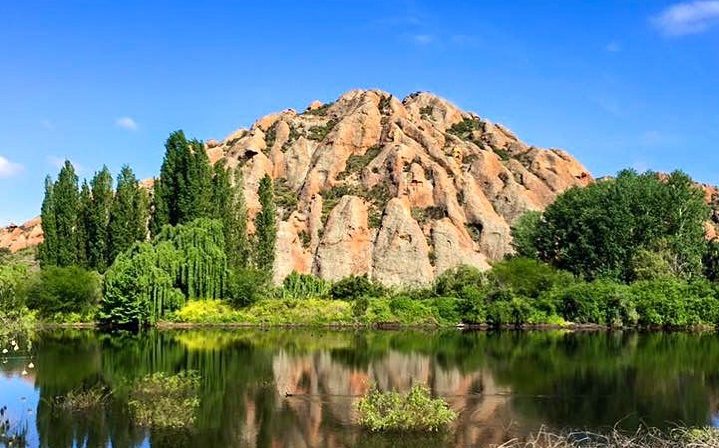If you have ever taken a road trip along the R62, there is little chance you haven’t marvelled at the spectacular red rock formations which follow along with you as you drive. As beautiful as they are ancient, these red hills have an interesting history.
“During the early Cretaccous Period the ancient super continent of Gondwana split up and Africa was finally separated from South America, Australia, India and Antarctica, standing alone for the first time. In a period characterised by warm humid conditions with lush vegetation and the big lizards, the Earth’s crust underwent major change as it stretched and split. It was accompanied by violent earthquakes and torrential downpours as rocks fractured and ruptured along the fault lines,” explains Geoff Wyatt-Goodall on the Caltizdorp website.
View this post on Instagram
This movement led to the creation of conglomerates which are still seen today. According to Wyatt-Goodall, these were previously called Enon Conglomerates but are now called the “Buffelskloof Formation”, after a nearby farm. However, most refer to these hills as the Red Stone Hills.
View this post on Instagram
These conglomerates were deposited where they stand today by rivers and streams created by the shifting Earth at the time of the Gondwana split. The angular rock scree which covers the slopes are known as Breccias and was also carried along to the area around this time. All of these were settled in the lake which made up the area where Calitzdorp now sits.
The erosion of these piles of rocks is what has created the unique “koppies” which run from Calitzdorp to De Rust.
The rich red colour of the rocks and sand comes from the iron mineral Hematite which is found in the stone and gives the hills their name.
“The precise age of the Buffelskloof Formation is not known very well because of poor fossil preservation, most likely due to the sediments being emplaced in an oxidizing environment,” explains Evelyn Mervine, a US geologist who visited the area.
View this post on Instagram
While there may not be many fossils left in the area, Wyatt-Goodall explains that there are two species of ancient plants that grow and thrive on its slopes. These are the cycad “Encephalartos horridus” found in the valleys and a fish species is still found in perennial streams in the foothills of the Swartberg near Calitzdorp.
Picture:,VanZylTravels/Instagram






